Blog
Adoption of LIMS will reduce your lab's workloads and costs by automating sample tracking, resource planning, and patient identification processes. To select LIMS, you need to identify your laboratory needs, evaluate customization options, and check its compatibility with your existing IT infrastructure. If off-the-shelf solutions are not your match, consider building a custom LIMS system. Amongst the top features to integrate are health metrics, formula compounder, and lab web portal. Exoft can help you with the entire LIMS development lifecycle, as described in our blog post.
Do you consider to buy a ready-made lab solution or create a LIMS system from scratch for your company? In fact, it’s an excellent idea as such software can transform your processes and boost their efficiency.
LIMS automates data entry, simplifies sample tracking, and ensures compliance with specific regulations. It organizes workflows for faster testing, protects sensitive data, and offers easy reporting and system integration.
Exoft is a software development company with extensive experience delivering solutions that meet various business needs. One of our specializations is
LIMS development services. We build custom solutions for labs in healthcare, pharmaceuticals, and many other fields to optimize workflows, handle sample management, and minimize manual errors.
In this article, we explore how to create a laboratory information management system and reveal the essential steps to succeed. You will learn about its core features and advantages and overview several specific examples and cases.
Essential Features Tailored for Your Lab
The LIMS market is expected to reach $2.5 billion by 2032. And that’s not surprising, as such a system positively impacts the operations of medical and other institutions that work with laboratories.
Do you want to take your laboratory to the next level? Then, consider the following essential features of LIMS to enhance your processes. Let's explore them in detail.
Sample Tracking
LIMS monitors samples, automatically tracking them as they move around the lab. Unlike manual tracking, it uses unique codes that exclude possible mistakes, leading to digitalization.
This digital approach means fewer errors in sample handling and faster identification. As a result, you can enhance the efficiency and reliability of lab operations. LIMS also allows for real-time updates on sample status, ensuring that staff always have the most current information at their fingertips.
Data Management Systems
This feature organizes and tracks the lab's data. It stores test results, notes, and records in one place, making it easy to find and use them when needed. The data management module ensures that the information is safe, up-to-date, and accurate.
With everything stored in one place, workers can quickly find necessary documents, fastening research and analysis processes. This feature helps maintain data integrity and supports compliance with regulatory standards. Thus, the labs can provide proof of their findings when necessary.
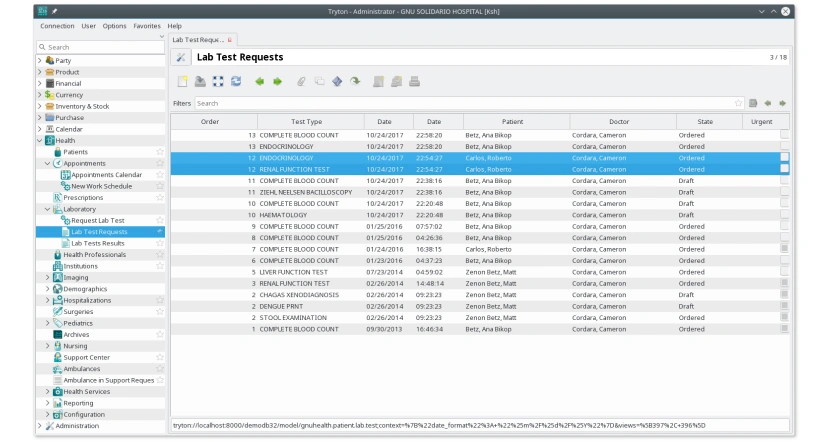
Barcoding and RFID Integration
Thanks to RFID integrations, LIMS makes tracking samples and equipment quick and easy. After scanning a barcode or RFID tag, workers instantly get all the information about the chosen item. It saves time, minimizes error, and keeps the lab organized.
This technology transforms inventory management by making it more efficient and accurate. By automating the identification process, labs can avoid manual entry errors. This leads to a higher speed of locating and managing items and a smoother operational flow.
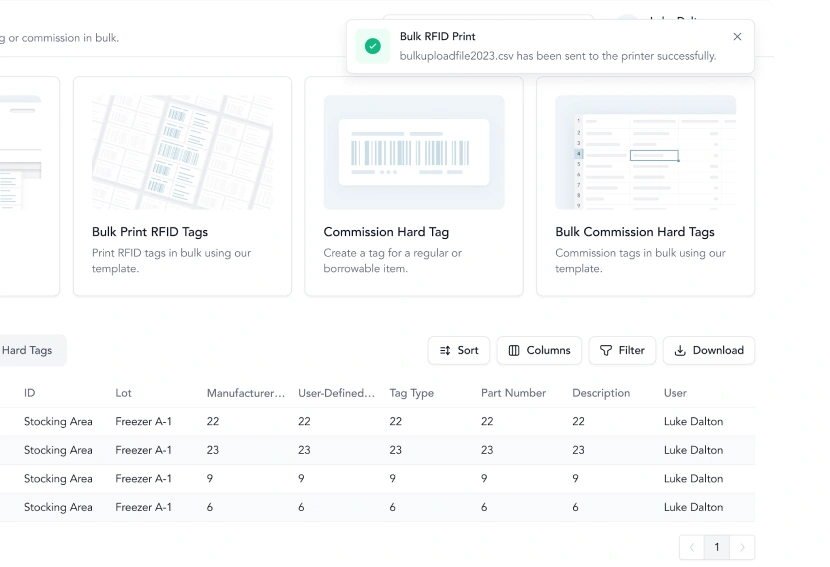
Lab Workflow Management
A simple laboratory management system includes a system for planning, tracking, and reporting lab work. It also has an electronic lab notebook (ELN) for technicians and managers to record and discuss lab activities. On top of that, the system provides data-sharing options. Thus, patients and medical staff can view lab results quickly and securely.
This feature ensures that every step of the lab process, from initial sample analysis to final reporting, is documented and accessible. Thus, you will improve communication and collaboration among staff.
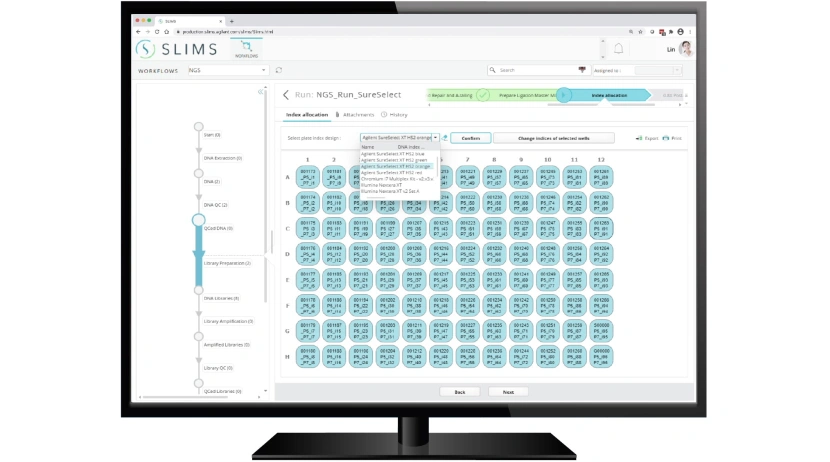
Resource Scheduling
With this function, labs use their equipment and staff more efficiently. It lets you avoid double bookings and ensure all the processes run smoothly. It provides access to schedules and reminders so you can connect them with other lab tasks to enhance workflows.
This function helps prevent conflicts in resource allocation, ensuring that every task is appropriately resourced and that timelines are met. It makes planning and executing lab activities more predictable and less prone to disruptions.
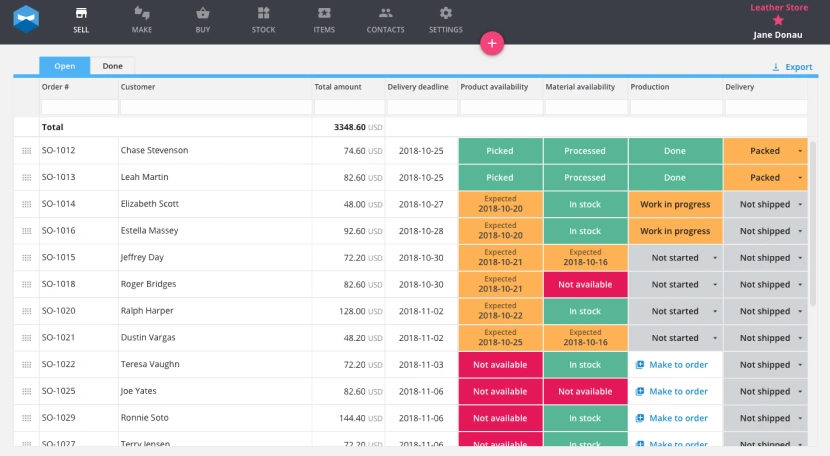
Lab Equipment Integration
LIMS software solutions are excellent for managing lab inventory. They facilitate the process and minimize hassle. Labs usually have chemicals and disposable items, various instruments and equipment, and samples at various stages, which require improved tracking options.
By providing a unified system, LIMS monitors all types of equipment and supplies. This improves operational efficiency. It ensures the availability of necessary materials. This feature also helps in maintaining a clutter-free and organized lab environment.
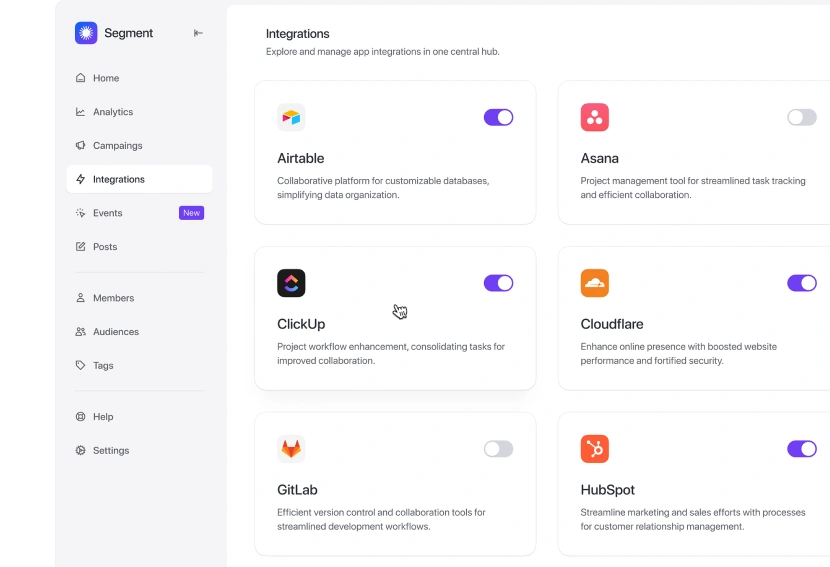
Laboratory Inventory Management
LIMS is also the primary control for tracking and managing lab inventories. Use it to organize storage spaces and perform checks and audits. The feature shows inventory status in real time and keeps digital records in easy-to-view formats.
This feature lets labs monitor how much stock they have. The instant access to inventory data helps make fast decisions. It is also essential for companies to plan better for managing their resources and saving budgets. Efficiently planning resources in LIMS ensures that inventory and other assets are utilized optimally to support lab operations.
How to Create a Laboratory Information System Step-by-Step
Now that you know the core features of LIMS configuration, it’s time to explore how to create a system for the laboratory. Here’s your step-by-step guide on where to start and what to focus on during the process.
1. Define Your Needs and Goals
At this stage, you understand what you want from your new system and set clear objectives. Here are the most critical aspects to consider:
- Purposes. Identify what you want the LIMS to achieve. For example, you may want to improve compliance, enhance data security, accelerate data sharing, and automate LIMS workflows.
- Success metrics. Determine how to measure the system's success. Prioritize efficiency gains and user satisfaction.
- Laboratory needs. Assess your lab's needs, including budget, functionalities, user access, and sample monitoring. Also, consider unique features for non-routine operations.
2. Research and Evaluate LIMS Options
This stage involves careful consideration and evaluation. Your primary goal is to ensure the selected system meets your lab’s needs. Here’s how to achieve it.
- Come up with a list of potential systems. First, list the most promising LIMS options. Not all systems fulfill every requirement. Therefore, iidentifying a pool of potential candidates is the first step.
- Demand demos and trials. Ensure each provider on your list can deliver a demo or trial version of their software development for laboratories. Hands-on experience with the LIMS will offer valuable insights into its suitability for your laboratory.
- Evaluate costs and services. Explore the associated costs, including implementation, licensing, integration, technical support, upgrades, data migration, and configuration. Opting for a vendor that offers free services can significantly reduce the total ownership cost.
- Assess vendor support. The vendor’s support team should know how to customize LIMS to fit your lab's specific workflows, data management, and reporting needs. Their availability for solving problems is also crucial.
When evaluating vendors who offer services to build LIMS software, you should be aware of what factors can influence the cost. The first one is about desired features and complexity. The customization level can also impact the price upward. Moreover, pay attention to the location and expertise level of the development team.
3. System Implementation and Customization
This step transforms your chosen software into a fully functioning system adjusted specifically to your laboratory's requirements. Below, find more about the steps to designing LIMS software.
You should start by laying out a clear plan. This includes setting timelines for the project and assigning tasks to your team members. You also have to get your laboratory's data ready for the move to the new system.
Then, depending on the system's requirements and your lab's preferences, install the LIMS software on the necessary hardware or configure it on the cloud. Ensuring the technical infrastructure is ready is crucial for a seamless operation when creating LIMS.
Next, you must transfer your existing data into the new LIMS. This essential stage in designing LIMS software requires special attention. You must avoid data loss or corruption, possibly involving data format conversions for compatibility.
Finally, customize the LIMS for small labs to fit your laboratory’s specific workflows, processes, and reporting needs. This vital process often involves configuring user interfaces or developing custom modules and software integrations.
4. Validation and Testing
Ensure your LIMS works as expected and meets all requirements. Here's a concise guide on how to do that correctly:
- Define test cases. Outline specific scenarios that simulate real-world use of the LIMS to cover all functionalities.
- Conduct validation tests. Run test cases to ensure that the LIMS performs as expected, meets regulatory compliance, and addresses your lab's needs.
- Identify and fix issues. During testing, spot problems or bugs and fix them to guarantee the LIMS runs smoothly.
- Repeat if necessary. Retest if needed to confirm all issues are resolved. This way, you will make sure your system is fully operational.
Once testing is complete and the LIMS meets all criteria, it’s ready for full-scale implementation.
5. Deployment and Ongoing Support
Even when building a LIMS system for labs is over, the journey doesn’t stop. Deployment and ongoing support are essential final stages to ensure your LIMS remains functional and beneficial over time.
To stay current, updating your LIMS regularly with new features and security enhancements is vital. Additionally, ongoing training for new and existing users is crucial to ensure everyone can fully utilize the system's capabilities.
LIMS Software Examples You Can Implement
Let’s overview several ready-made solutions for a better understanding of laboratory management systems software in practice. Successful LIMS system implementation ensures that these solutions align with lab workflows, delivering maximum efficiency and value.
Health Metrics
Exoft created a web application for a tech startup, simplifying how therapists gather patient feedback and monitor ORS and SRS scores. Our HIPAA-compliant solution integrates with clinical IT systems globally, offering the following features:
- Tagging for easy case management
- Advanced ORS and SRS tracking
- Customizable feedback questionnaires
- Detailed reports and multilingual support
- Centralized management of personnel details
This platform significantly improved therapists' productivity and saved costs. Moreover, we enhanced patient satisfaction by automating feedback collection and integrating with existing medical software. Our solution provided over 1000 positive feedbacks and made team communication simple. On top of that, it delivered insights for personalized care and operational improvement in healthcare services.
Formula Compounder
We also developed a
custom LIMS for a European pharmaceutical company, enhancing their lab operations and drug manufacturing efficiency.
The solution’s core features include:
- Easy-to-use formula templates
- Tracking of formula usage
- Detailed component database
- Inventory control
- Automated ordering
- Quick-reporting system
This software streamlined lab processes, improved compounding accuracy, ensured better inventory management, and provided advanced analytics for formula usage. Also, it significantly reduced human errors and increased productivity in the client's pharmaceutical labs.
Lab Web Portal
We built a web and desktop app for a medical center to streamline ordering lab tests and task management for doctors. The system works with other software like STARLIMS and Microsoft Dynamics CRM. Its primary features include the following:
- Easy test ordering and dashboards
- Automatic reports and patient info
- Secure accounts and custom alerts
- Diagnosis card and custom report creation
This solution saves doctors’ time, reduces mistakes, and simplifies monitoring lab results. It also demonstrates how beneficial it is to use LIMS software for improving lab workflows and integrating with existing systems.
The Unmatched Advantages of LIMS Systems
We explored some practical cases of using lab solutions, revealing the benefits of LIMS. Now, let’s sum up the most significant pros of these systems.
- Save time. Labs can automate tasks like sample tracking and data management to accelerate their work and minimize effort.
- Improve quality. LIMS applications ensure that tests and experiments are correct by closely monitoring lab processes and results.
- Reduce mistakes. By tracking and recording everything digitally, you reduce the risks of human error, which often mess up the results.
- Optimize the LIMS system process. These systems streamline laboratory workflows by standardizing processes, improving productivity, and maintaining consistency.
- Follow laws and regulations. With LIMS, labs ensure they meet all the necessary standards and regulations, avoiding legal issues.
- Enhance communication. Sharing information and results is effortless within the lab and with external partners or clients.
All in all, LIMS makes the lab workflow more efficient and addresses many existing problems.
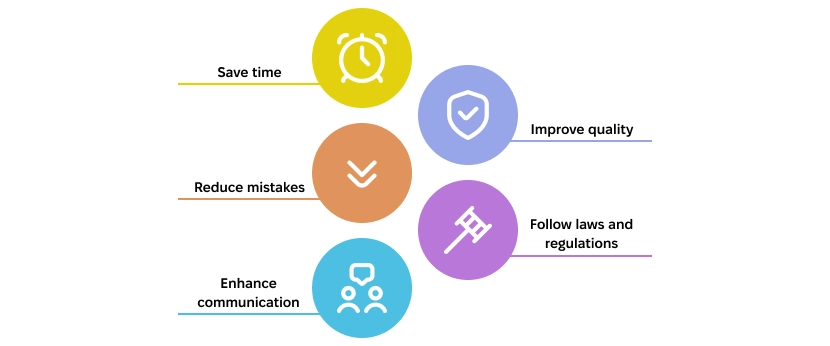
Challenges You May Face
While LIMS implementation is pretty easy, you may still face some pitfalls. Let's review the most widespread challenges in greater detail.
- Costs. Buying and setting up LIMS is pretty expensive, especially for small labs.
- Staff training. Teaching workers to use the new system requires time and resources.
- Data migration. Labs usually handle lots of sensitive data. Transferring it into the new system requires extra caution.
- LIMS customization. The system should stick to the specific needs and workflows of a laboratory.
- Integrating with third-party apps. Labs can use additional tools and systems to work more effectively, which requires proper integrations.
The good news is that you can avoid all those challenges with a team of experienced developers like Exoft.
Conclusion
Implementing a LIMS enhances lab processes, reduces errors, and ensures compliance with the essential rules. With functionality like tracking samples and managing data easily, your medical organization will work smoothly and productively.
Although setting it up can be costly and requires training, its boost in efficiency and accuracy is well worth it for any lab aiming to improve. But here, choosing a dedicated LIMS partner is crucial.
The development company will set up all the necessary functions and integrate the LIMS with third-party tools to customize the solution to your lab’s specific needs. A trusted partner also ensures data security and compliance. With such a company, you will overcome all the challenges mentioned above without inflating your budget. Finally, an experienced team provides reliable support, ultimately saving time and money in the long run.
If you strive to create LIMS for your lab and want to dive deeper into the topic, feel free to
contact us.
